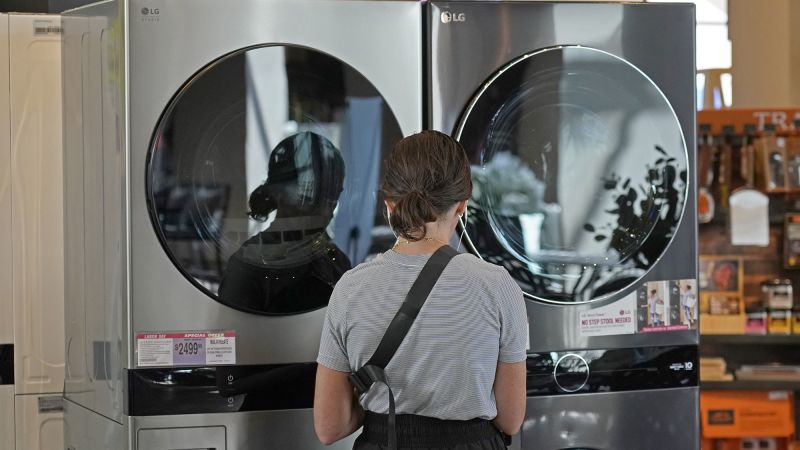The Trump administration is set to implement a significant change to its steel tariff policy, impacting the cost of consumer appliances containing steel. As detailed in a forthcoming notice from the Commerce Department that is expected to be published in the federal register, the recently heightened steel tariffs will now extend to good appliances such as refrigerators and dishwashers. Starting June 23, these “derivative products” will incur an additional 50% tax based on the amount of steel they contain, making essential household items potentially more expensive for consumers.
The list of affected products is extensive, including not only refrigerators but also dryers, washing machines, dishwashers, ovens, garbage disposals, and wire racks. This development has raised concerns among American manufacturers, who have expressed that the increasing costs for parts and components, which often have no domestic alternatives or are substantially more costly, could hinder competitiveness. Companies have also complained that foreign competitors have been able to sidestep tariffs by shipping finished products that do not attract the 50% levy, putting U.S. manufacturers at a disadvantage.
In response to these challenges, the administration has introduced a so-called inclusion process meant to prevent foreign companies from evading tariffs. The intention behind these tariffs is to drive demand for American-made appliances, thus bolstering the domestic appliance industry. Theoretically, by imposing tariffs on imported appliances, U.S. manufacturers of dryers, ovens, and similar products would be better positioned to compete against cheaper foreign goods, constructed with less expensive components and labor.
Amidst this backdrop, President Donald Trump recently visited a U.S. Steel facility in Pennsylvania and declared tariffs on imported steel will rise to 50%, effectively doubling the previous rate of 25%. He noted instances of companies circumventing tariffs when they were set at the lower rate and expressed confidence that the increased tariff would deter such behaviors. During this announcement, Trump claimed that without these tariffs, the American steel industry faced a bleak future, suggesting that American steel fabrication would have dwindled to extinction in the absence of action.
While the tariffs may afford a boost to the struggling U.S. steel sector, they raise concerns about price increases for fundamental materials in construction and manufacturing—areas that Trump has vowed to support. Following the initial announcement of a 25% tariff in March, domestically sourced steel prices have surged, as U.S. producers have had less competition from foreign steel sources. This price turbulence poses risks for various industries that rely heavily on steel for production.
During Trump’s first term, tariffs on steel did spur moderate growth in U.S. production; however, they also resulted in increased production costs across sectors including automotive, tools, and machinery. A 2023 analysis conducted by the International Trade Commission revealed these tariffs led to a reduction in output of over $3 billion in these industries.
Additionally, his administration previously imposed tariffs on imported washing machines ranging from 20% to 50%, a move initially welcomed by American manufacturer Whirlpool. Nonetheless, Whirlpool later criticized Trump’s steel tariffs due to the elevated costs—hundreds of millions of dollars—involved in manufacturing. This increase pushed up the average price of washing machines by around $90 while only generating approximately 1,800 new American jobs, a figure reviewed by the Federal Reserve and the University of Chicago.
In summary, the decision to expand the scope of steel tariffs to include consumer appliances is multifaceted. While aimed at protecting American industry and creating jobs, the potential for increased consumer prices and the strain on related sectors remains a contentious debate. The long-term effects of these tariffs on both domestic manufacturing and consumer markets will likely unfold in the months and years to come.



